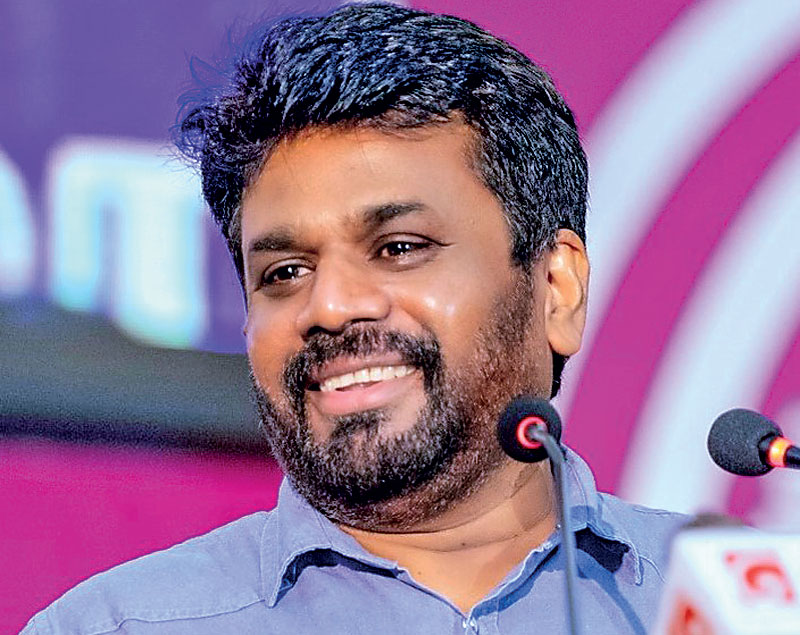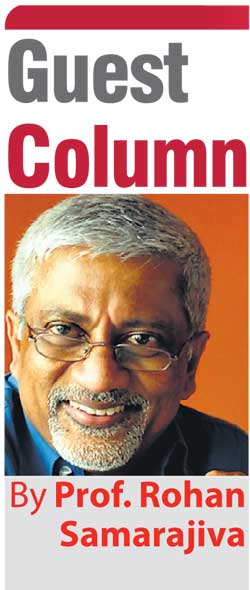Saturday Dec 14, 2024
Saturday Dec 14, 2024
Friday, 10 February 2023 01:26 - - {{hitsCtrl.values.hits}}

It is unusual for a formerly revolutionary party that still sees itself as being socialistic, to be so kind to high earners

The unprecedented economic crisis Sri Lanka finds itself in was triggered by some irrational tax cuts. The path out of the crisis will necessarily involve tax increases. The most critical indicator of whether Sri Lanka is likely to be able to pay its debts is the primary balance, for which we have agreed on targets with the IMF. We now have a negative balance (as we have had for most of 75 years since independence). We have to meet the intermediate targets that would make it +2.3% of GDP by 2025 if the IMF certification is to hold.
Cutting costs of Government is necessary, but difficult. While focusing on that, we need to increase revenues, if we are to meet the agreed upon targets (it has been reported that the Government has met the first intermediate target set for 2022). Here is the first one that was agreed upon by the Government and the IMF:
Raising fiscal revenue to support fiscal consolidation. Starting from one of the lowest revenue levels in the world, the program will implement major tax reforms. These reforms include making personal income tax more progressive and broadening the tax base for corporate income tax and VAT. The program aims to reach a primary surplus of 2.3 percent of GDP by 2025.
According to the data for the first nine months of 2022 as reported in the Fiscal Management Report, income taxes from individuals and companies comprised 30% of total government revenues. Personal income tax from the 412,092 taxpayers who remained at the end of 2021 would have contributed less than the 21% from VAT.
VAT was increased from 8% in two stages to 15% in the latter half of 2022, so it is reasonable to expect that the contribution from VAT in 2023 will be higher in rupee terms than it was in 2022. VAT is an indirect tax that has a disproportionate effect on the poor. Whether it will form a larger proportion of Government revenue than personal income tax will depend on the Government’s ability to hold the line on the personal income tax increases that came into effect in January 2023.
But employees, including those in the port and the Central Bank, are protesting. Alternatives are being proposed, among others by the JVP and the Administrative Service Union. Perhaps, Government will have to make some adjustments, without conceding the basic principle of progressive taxation at a level adequate to support the services we expect (but not the inefficient, bloated mess that now exists).
JVP’s personal income tax proposal
The JVP leader has proposed that monthly income up to Rs. 200,000 (annual Rs. 2.4 million) be exempt from taxes and that the maximum tax should be lowered from the current 36% to 24%. It is unusual for a formerly revolutionary party that still sees itself as being socialistic, to be so kind to high earners.
Given their current push to attract middle-class votes, exemplified by the positioning of Vraie Cally Balthazaar as a standard bearer, the JVP’s proposal to exempt those earning less than Rs. 2.4 million a year from taxes is understandable. It is still the same auction of non-existent resources, but at least it makes political sense. The same cannot be said of the capping of the tax rate at 24%. Do they really believe that the few individuals earning over Rs. 3.9 million (monthly income of Rs. 325,000) are potential JVP voters?
One possibility is that the JVP leader and his advisors are ignorant about how taxes are calculated and/or the distribution of income earners (leaving aside the thorny problem of those whose earnings come from undocumented sources). Perhaps they are unaware that no one, not one single person, will pay 36% of their earnings in taxes. The 36% applies only to the topmost slab. Because the slabs below that are taxed at lower rates (the bottom 100,000 at zero), the actual percentage can never be 36%. In the case of the person earning Rs. 24 million a year in the Table, the percentage is 32.3. As income increases, the percentage will approach 36, but will never be 36.
The Household Income and Expenditure Surveys will give a rough idea of how many individuals/households earned between Rs. 1.2 million and 2.4 million in 2019 (the beneficiaries of the proposal to raise the taxable threshold) and who earned more than Rs. 3.9 million (the beneficiaries of the capping of the rate at 24%). The latter category would be among the 400,000 plus active files remaining after the Gotabaya give-aways, so it would be possible to get the information through a Parliamentary Question or an RTI request.
The JVP can thus calculate the votes that may potentially be gained by the auction of non-existent resources. If it wishes, it can also calculate how much revenue would be lost to the State. As the Table shows, the State will lose Rs. 2,754,000 from each taxpayer earning Rs. 24 million a year if the JVP proposal is implemented. If you know how many taxpayers are earning this amount, the total loss is calculable. Once all the losses are aggregated, the JVP can, if it is in charge of government by then, know how much it has to reduce expenditures by, or how much it has to increase indirect taxes by.
SLASA proposal
The JVP is a political party, hoping for the first time to make significant inroads into the middle class. Its proposals are wrong but partially understandable. The same cannot be said of Sri Lanka Administrative Service Association (SLASA) proposals.
SLASA has proposed to lower the top rate to 24% like the JVP. They want monthly earnings below Rs. 300,000 (Rs. 3.6 million per year, higher even than what was implemented by Gotabaya Rajapaksa) to be exempt.
SLASA wants to raise the tax threshold because most persons working for the State (except those at the Central Bank, Attorney General’s Department, professors at State universities, etc.) would not have to pay any taxes. Naked self-interest from the so-called crème de la crème of State employees. But stupid because they should have been aware of the damage done by the Gotabaya tax changes.
The SLASA proposal causes enormous losses to revenue, as can be seen from the Table. For example, the State would lose Rs. 252,000 per taxpayer with an annual income of Rs. 3 million and Rs. 882,000 per taxpayer earning Rs. 6 million.
By setting the top rate at 24%, SLASA confers enormous benefits to all taxpayers earning more than Rs. 5.1 million. It is highly unlikely that state employees are in this high-earning category. Even naked self-interest fails as an explanation, leaving only stupidity.
The time has come for a radical reorganisation of the state services, dethroning the Sri Lanka Administrative Service from its perch and sending the people who came up with this proposal for compulsory re-education.
